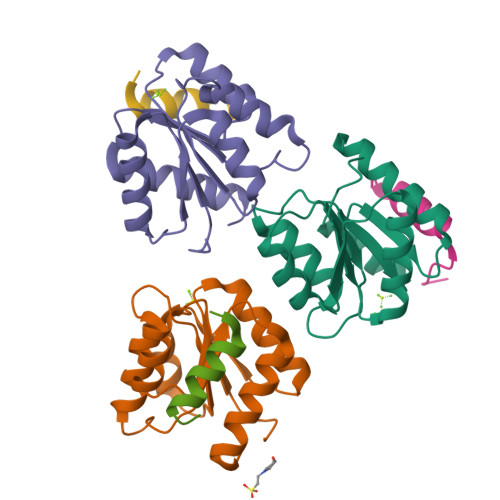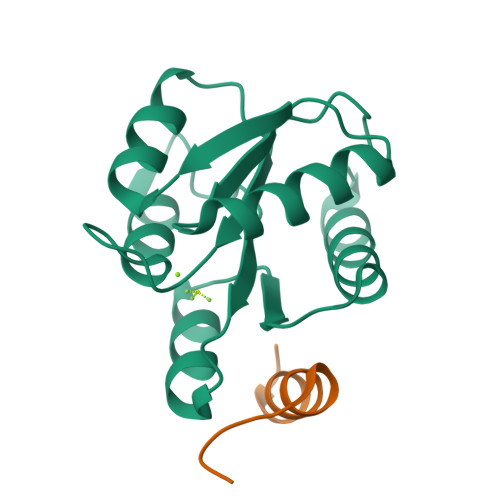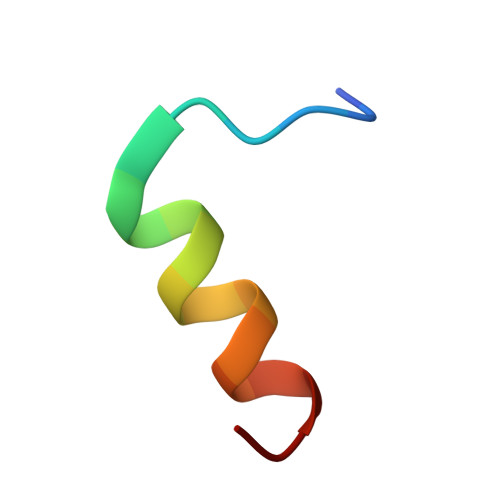Interaction of CheY with the C-terminal peptide of CheZ.
Guhaniyogi, J., Wu, T., Patel, S.S., Stock, A.M.(2008) J Bacteriol 190: 1419-1428
- PubMed: 18083806
- DOI: https://doi.org/10.1128/JB.01414-07
- Primary Citation of Related Structures:
2PL9, 2PMC - PubMed Abstract:
Chemotaxis, a means for motile bacteria to sense the environment and achieve directed swimming, is controlled by flagellar rotation. The primary output of the chemotaxis machinery is the phosphorylated form of the response regulator CheY (P-CheY). The steady-state level of P-CheY dictates the direction of rotation of the flagellar motor. The chemotaxis signal in the form of P-CheY is terminated by the phosphatase CheZ. Efficient dephosphorylation of CheY by CheZ requires two distinct protein-protein interfaces: one involving the strongly conserved C-terminal helix of CheZ (CheZ(C)) tethering the two proteins together and the other constituting an active site for catalytic dephosphorylation. In a previous work (J. Guhaniyogi, V. L. Robinson, and A. M. Stock, J. Mol. Biol. 359:624-645, 2006), we presented high-resolution crystal structures of CheY in complex with the CheZ(C) peptide that revealed alternate binding modes subject to the conformational state of CheY. In this study, we report biochemical and structural data that support the alternate-binding-mode hypothesis and identify key recognition elements in the CheY-CheZ(C) interaction. In addition, we present kinetic studies of the CheZ(C)-associated effect on CheY phosphorylation with its physiologically relevant phosphodonor, the histidine kinase CheA. Our results indicate mechanistic differences in phosphotransfer from the kinase CheA versus that from small-molecule phosphodonors, explaining a modest twofold increase of CheY phosphorylation with the former, observed in this study, relative to a 10-fold increase previously documented with the latter.
Organizational Affiliation:
Center for Advanced Biotechnology and Medicine, 679 Hoes Lane, Piscataway, NJ 08854, USA.






















